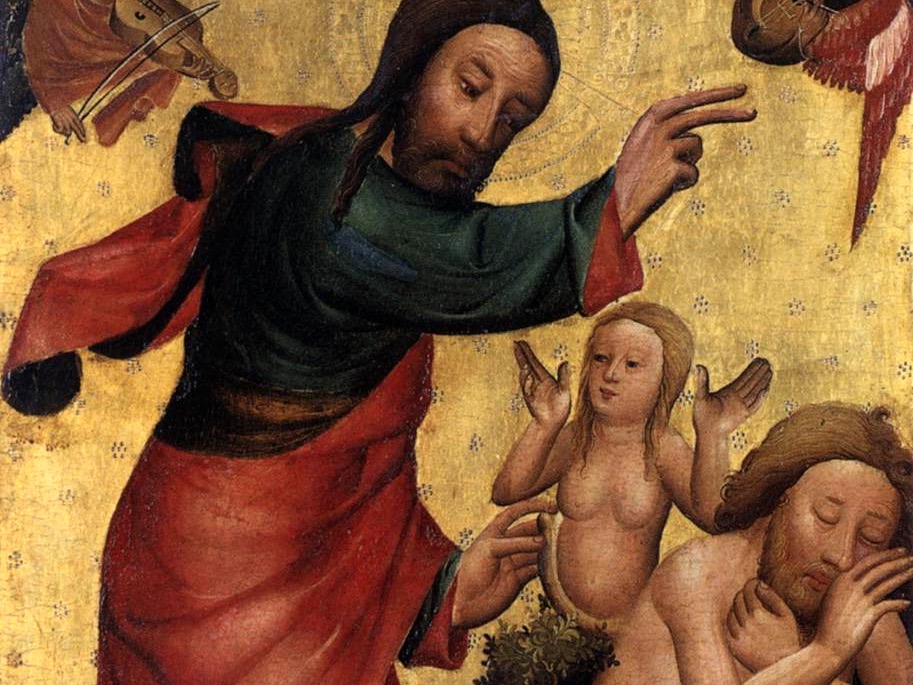
The myth of the creation of man and woman in art has always held a special fascination in every age. Following the creation of the world in art, the moment when the Earth is occupied, by divine hand, by man and woman allows us to reflect on the fate of humankind, our past and consequently our future.
In this post I share five works, from the Christian tradition, that have interpreted this important and fascinating theme.
5 must-know works depicting the creation of man and woman in art
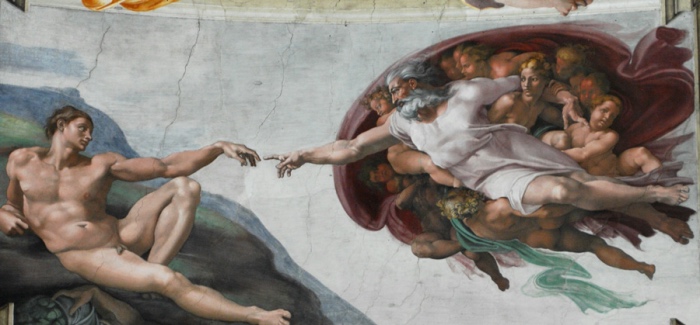
Michelangelo Buonarroti, Cappella Sistina. La creazione dei Adamo
The creation of humankind takes place, in the Bible, on the sixth day of the creation of the world and is narrated in the first chapter of Genesis. in the second chapter of Genesis, however, the story is narrated in detail, describing God’s act in shaping man through the dust of the ground and blowing into his nostrils a “breath of life.”
The woman, on the other hand, is created from a rib of the man, after God caused the man himself to fall into a deep sleep.
This narrative, with its sequence of divine events shaping humankind, has offered numerous insights for art to explore the theme of humankind’s origin and destiny.
Here are 5 masterpieces that recount the creation of man and woman in art.
1. MICHELANGELO BUONARROTI, THE CREATION OF MAN (1508-1512)
The work is famous and can be found on the vault of the Sistine Chapel.
When Michelangelo created this masterpiece, he designed the space to include Adam, semi-reclining and with the face of a young man and waiting to be joined by the divine spirit.
Adam is calm and confident. His arm reaches out toward God, who arrives surrounded by numerous angels supporting him, all wrapped in a red robe. The Creator is calm and focused in the act of creation, while all around is endowed with movement, as if God is coming quickly and able to move the air and the elect around.
The center of the scene, however, is neither God nor Adam. The center is the point where the fingers of the hands of the two protagonists are about to come together. At that point the energy of Creation is about to be unleashed, which will make Adam vigorous and no longer helpless, and which will initiate a story as incredible as that of humankind.
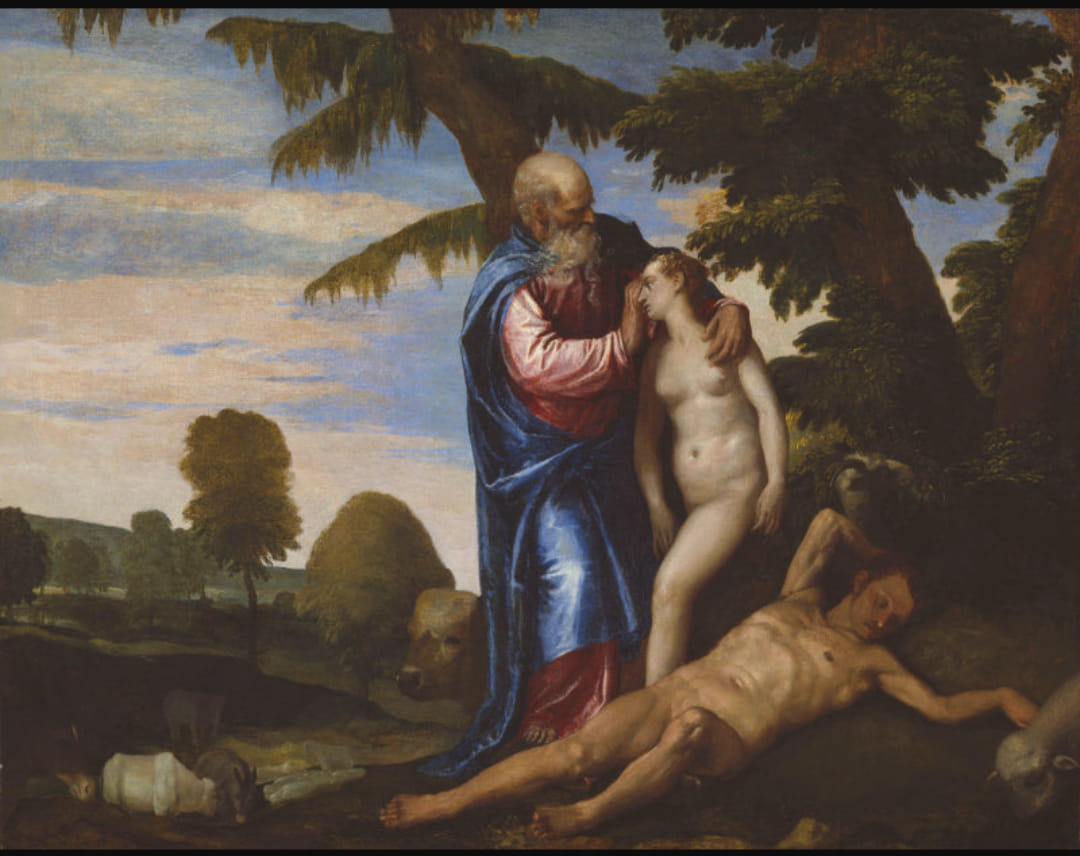
Paolo Veronese, Creazione della donna
2. PAOLO VERONESE, THE CREATION OF THE WOMAN (c. 1570)
The work is preserved at the Art Institute of Chicago and depicts the moment when God, elderly and with a long white beard, imprints the spirit of life on Eve’s forehead.
The scene is set in a country landscape, Adam is asleep, and the first two humans are completely naked.
Adam and Eve are given life by God who will give them the Garden of Eden, free of danger and full of delights. Their nakedness stands for their being sinless, pure and innocent.
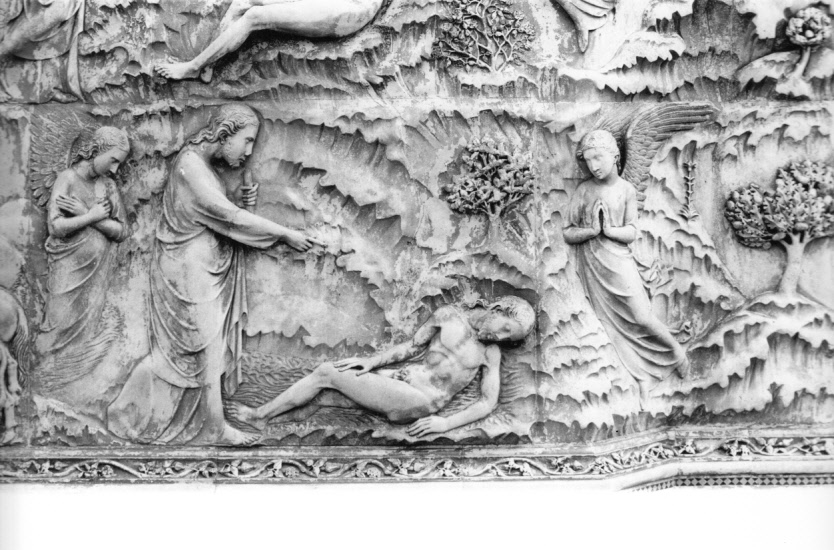
Creazione dell’uomo sulla facciata del Duomo di Orvieto
3. LORENZO MAITANI, THE CREATION OF MAN (c. 1320)
This relief is found on the facade of Orvieto Cathedral.
It shows an angel, with his hands crossed on his chest, witnessing the creation of the first man. God stands in front of him and is depicted in profile, with his beard and hair flowing down his shoulders, while with his left hand he holds a staff and with his right hand points to Adam to give him life.
Adam is lying on the ground, as if his bond with matter is very close and inevitable. A bond that becomes conscious only because of the ito of life that blows only from God.
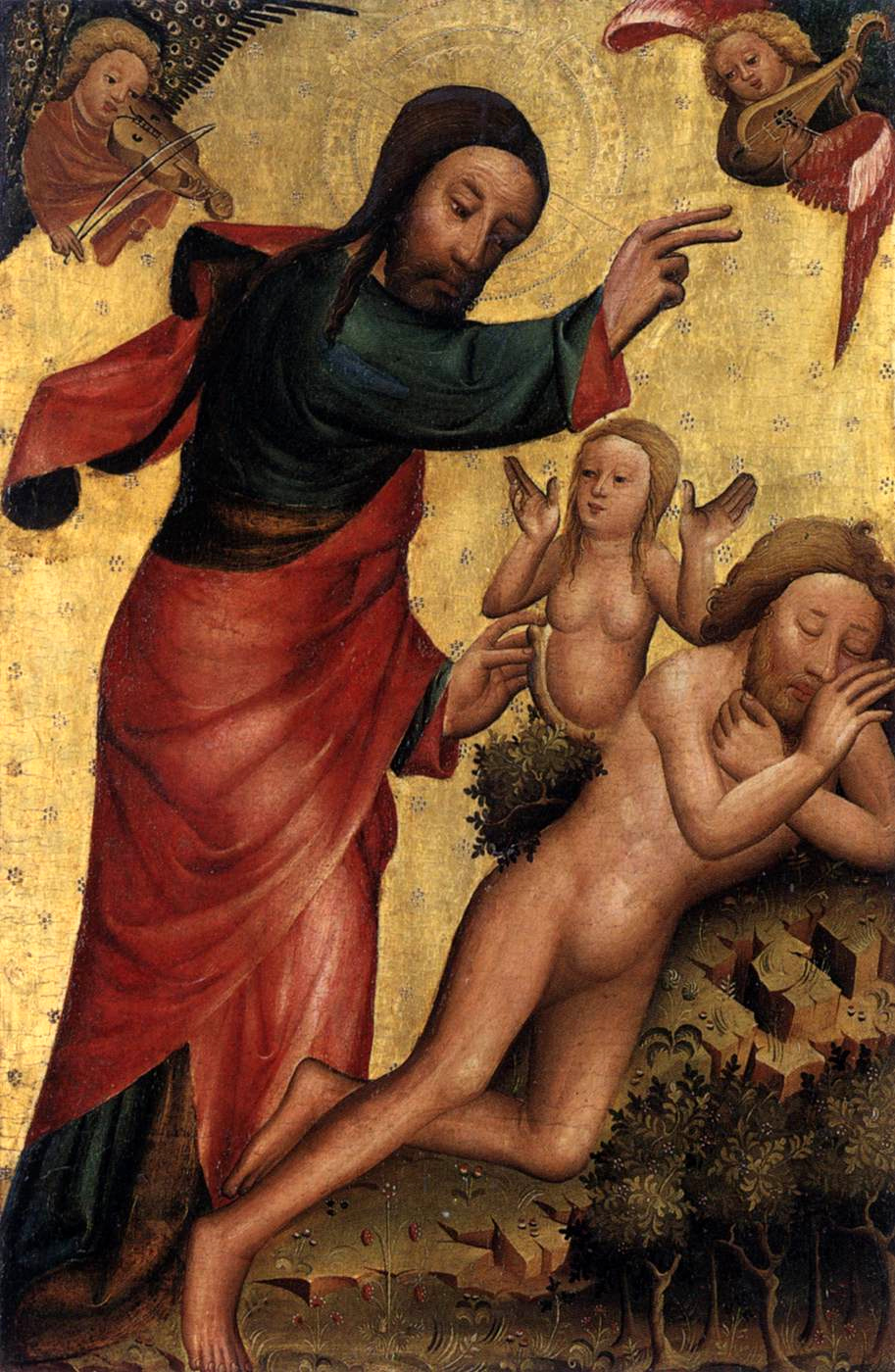
Maestro Bertram von Minden, La Creazione di Eva
4. MAESTRO BERTRAM VON MINDEN, THE CREATION OF THE WOMAN (1379-1383)
The work is found in a panel of the altar of St. Peter at the Kunsthalle in Hamburg.
Two musician angels stand in the upper part of the panel, which has a background completely painted in gold and is framed by a decoration executed with punches.
The image of creation described here comes directly from the Bible and shows the moment when Eve comes out of the rib of man. While this is happening Adam is fast asleep.
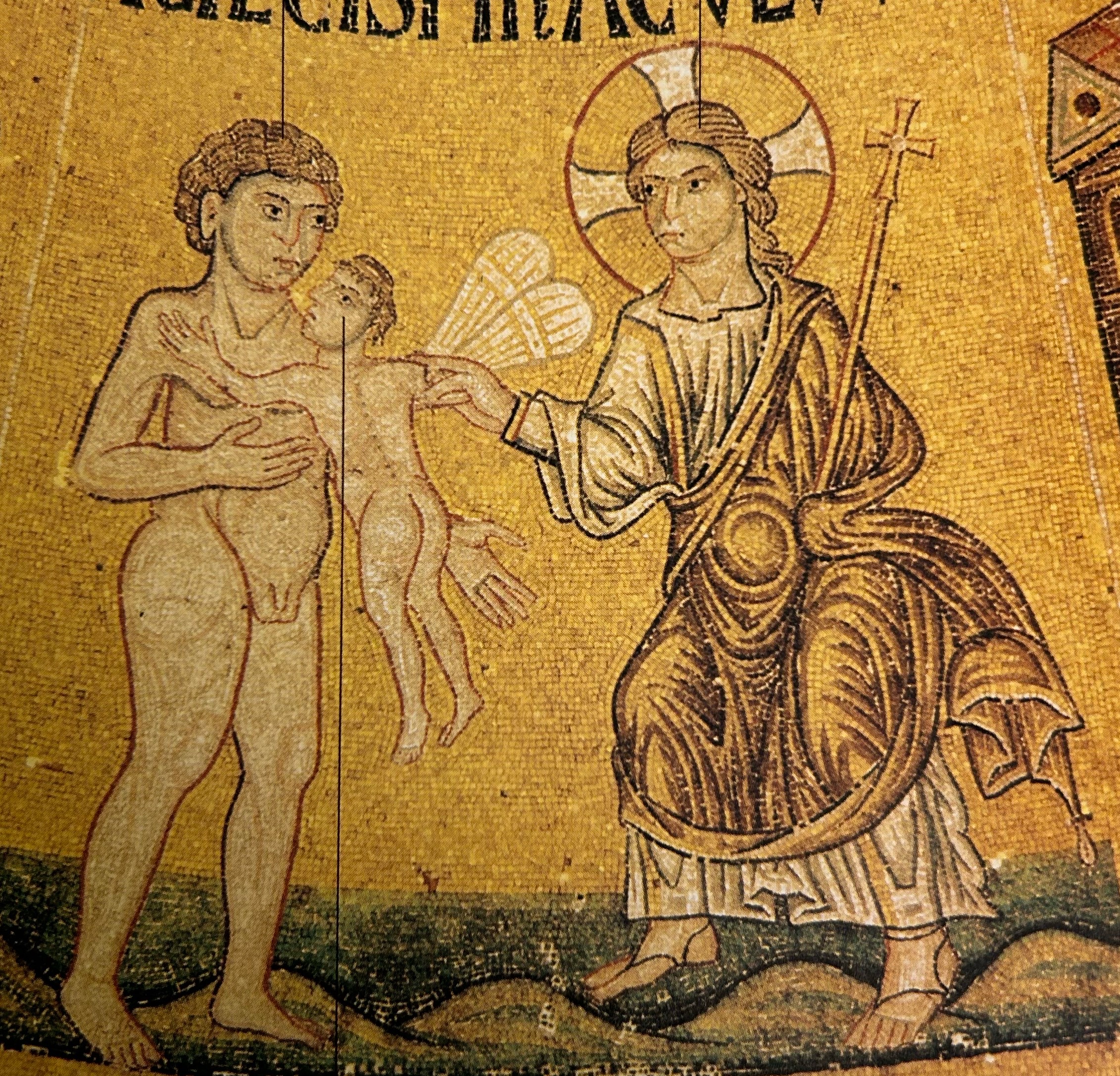
Mosaico della Creazione dell’Uomo, Basilica di San Marco a Venezia
5. MOSAIC WITH THE CREATION OF MAN (c. 1215-1225)
The mosaic is located inside St. Mark’s Basilica in Venice and is unique in that it depicts the creation of man but especially the moment when he is endowed with a soul.
Adam is naked, because he is sinless, innocent and pure as all of God’s creatures originally are. He appears standing as he welcomes a small winged figure into his arms. It is his soul and exactly echoes the passage in the Bible where we read, “He breathed into his nostrils a breath of life; thus man became a living being.”
What is special is that a similar figure is also present in the Egyptian figurative tradition, demonstrating the multiculturalism present in the city of Venice since the Middle Ages.
God is presented as a young man. Above his head is seen the cross-shaped halo, which is a characteristic attribute of Christ, while with one hand he holds the scepter, a symbol of power and authority.

